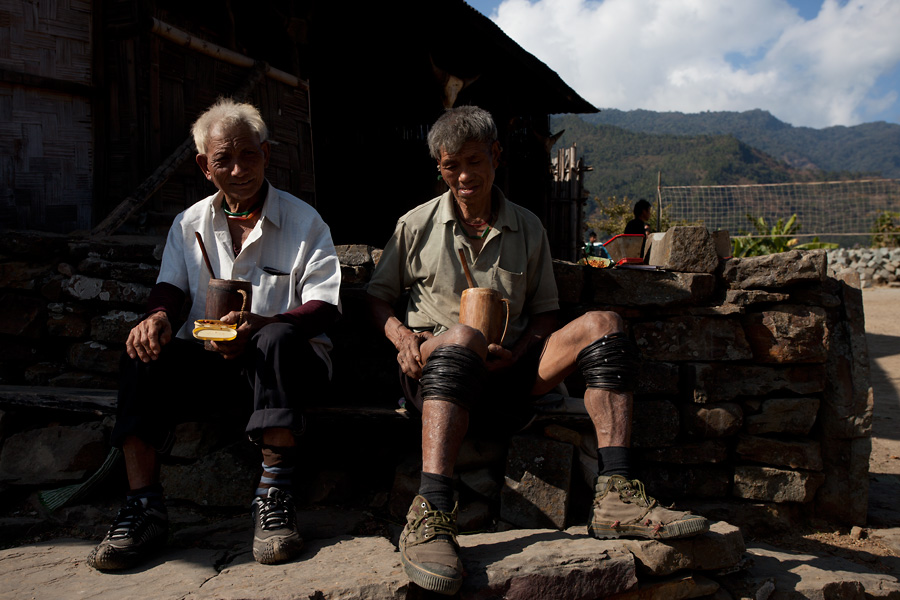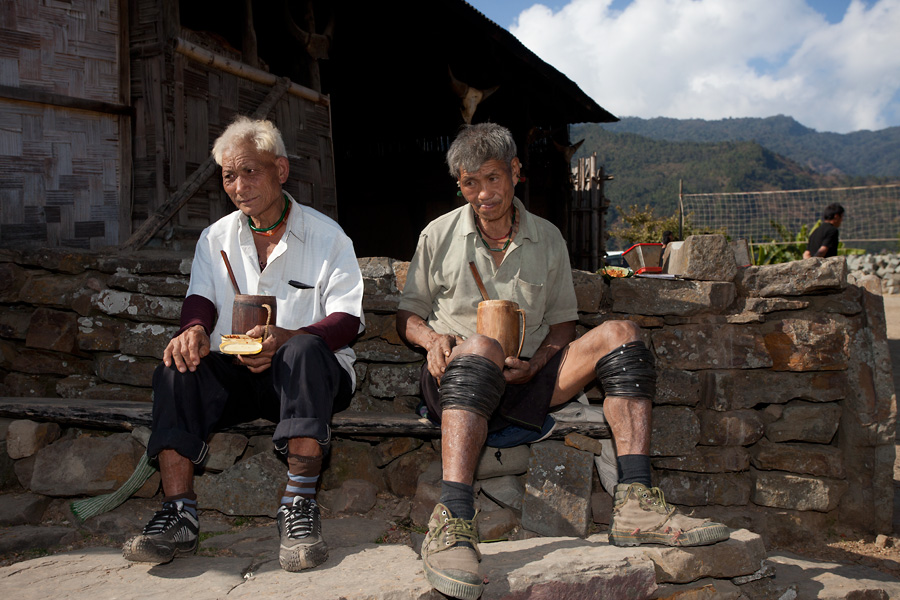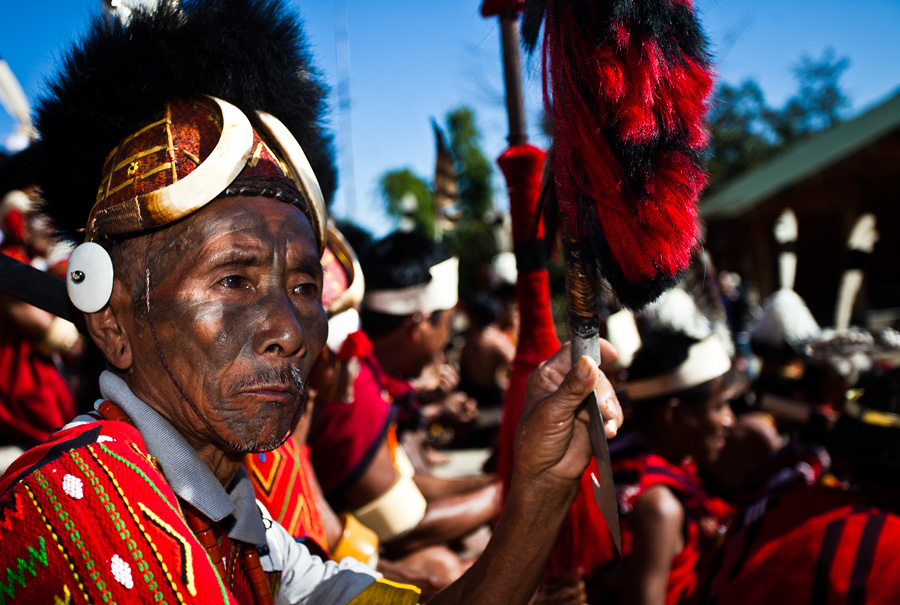Also see: part I – using flash for indoor portraits
In the last edition, we wrote about using an external flash for getting better portrait indoors. This part addresses using flash as fill light when photographing outdoors.
Travelling in North East India on our yearly photography tour to the North-East and Hornbill Festival (this year’s schedule: Dec 5-13), we spent a lot of time photographing the indigenous people in small villages and festival venues. Much of this photography happened outdoors during the day, often when the sun is bright and strong.
In such situations, we run into problems of managing variation of light within the frame, as the sunlight can cast very strong shadows. Areas in these shadows can appear very dark and often not properly visible in the photographs, resulting in poorly made images. See the example below of an unedited image, shot in bright sunlight.
As you can see, shadows are poorly lit and the details aren’t clearly seen.
- If you try to increase the exposure when you are shooting, you may be able to brighten the shadow areas. But this will not work well, as it also result in well-lit areas getting overexposed.
- This could be fixed to some extent by processing the image, but the results may not always be appealing. The processed image can have noise in the dark areas, may produce unnatural looking colours and sometimes appears unrealistic.
A solution to this lies in using a flash, preferably an externally mounted one. By using a flash, you can fill in the areas that are dark and bring back the details that would otherwise be last. This way of lighting up the shadows is usually referred to as using a ‘fill-flash’. Below is the unedited image made using a fill flash. Compare the two images and see the differences in shadow areas! The shadow areas are represented much better in the second image.
When carefully used, there are several advantages in firing a flash when you shoot in bright sun.
- Well-lit areas are not affected. You can also see that the fill-flash hasn’t had any negative impact on parts of the frame already lit by the sun. This is because the sunlight is fairly strong compared to flash, and flash has little effect on areas already lit by the sun.
- Shadows still exist – they are not completely eliminated. You can also note that the flash-lit areas (or shadow areas) are still darker than sun-lit areas. If the flash had completely eliminated the shadows, it could result in a flat-looking image that also makes the presence of a flash lighting very obvious. The flash has just brought out the shadow details and improved the image, without compromising the mood and overall quality of light in the image.
Using a fill-flash is a great way to fill shadow areas when you shooting outdoors in bright sun. But there are a few things that one must take care of.
- Flash can light-up only nearby objects. A flash can help you light up only areas that are close-by. Yet, one mustn’t under-estimate the capability. Depending on the type of flash and the aperture used, flash can light up subjects as far as 20 meters or more. But it can’t be used effectively for large areas or large objects, such as filling shadows at a faraway stage with many performers, or in the shadow of a large truck. It is effective when used on objects nearby that are not very spread out.
- Intensity of your flash matters. Most external flashes provide an option to increase or decrease the light intensity. Use this to ensure that you firing just enough flash light to fill the shadows and not completely eliminate it. Excess light may result in a very flat-look. In your first few attempts of using a flash, this may require some trial and error operations before you become better at judging your flash. Understand what is a flash guide number and know the guide number of your flash to predict the intensity of flash light better.
It helps immensely if you can carry an external flash to handle these kind of situations. But in the absence of one, your camera’s pop-up flash might just be able to do the trick.
Below is another example of and unedited image of how a fill-flash has helped in bringing out the shadow details. The shadow areas on the face would have appeared very dark without a flash.
Also see: Our upcoming photography tour – Photography in North-East India and Hornbill Festival – during which the above images were made.



